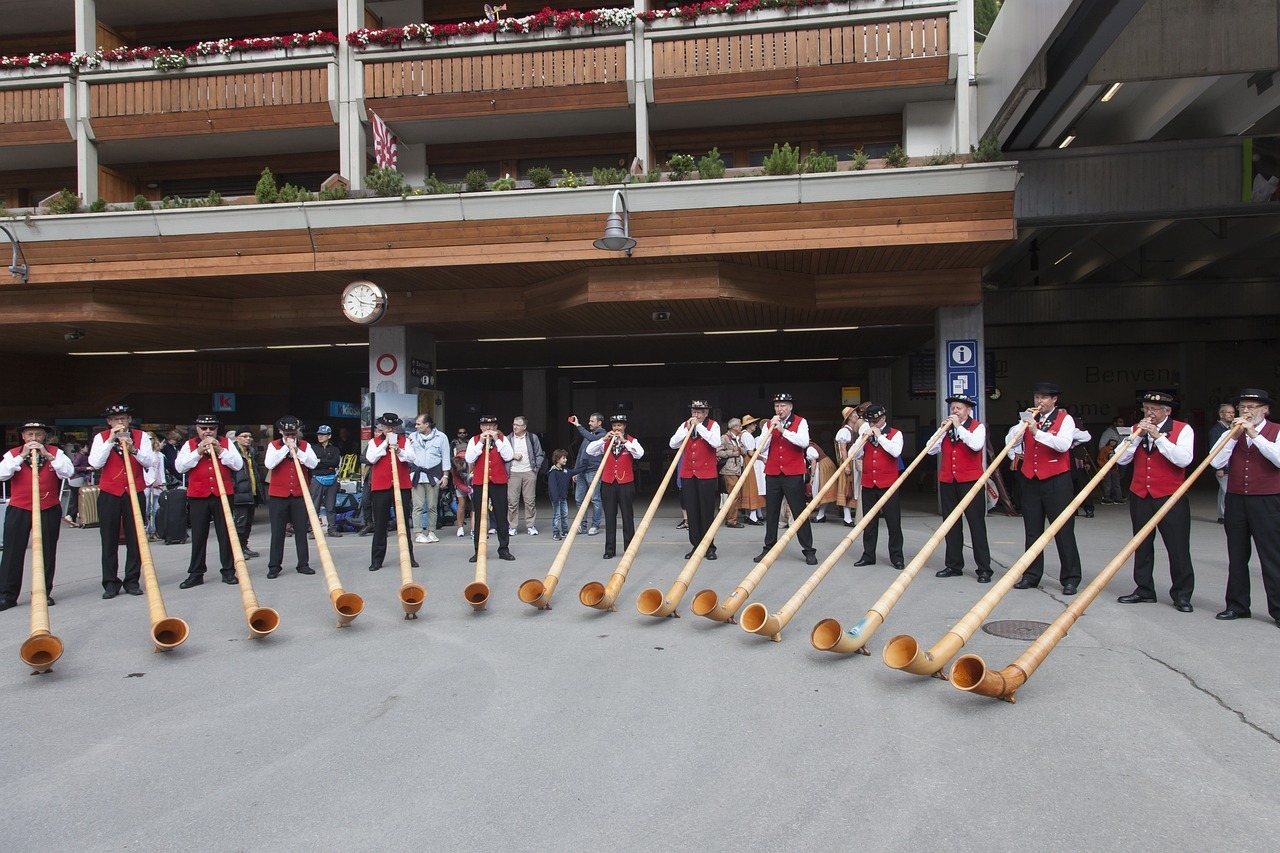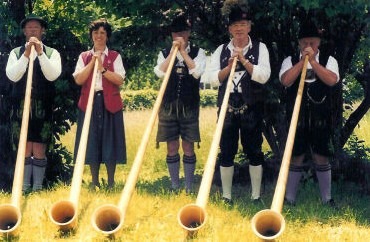Did you know that the shepherds initially used the Alphorn instrument? Back in 1595, a painting from the Emmental Valley shows a man blowing Alphorn. Aside from that, in 1754, an engraving shows a shepherd blowing an alphorn to motivate the cows in their climb on the Alps.Aside from motivating and calling cows, the Alphorn instrument was also used by the Reformed cantons in Switzerland as an evening prayer. However, the main function of the Alphorn is to communicate with the herdsman in the other neighboring Alps, as well as to the people in the valley below.
Subsequently, in 1800, as the production of cheese had shifted from the Alps to the dairies in the villages, Alphorns were used less and less. Since then, Alphorns were hardly heard from the festivals. Nevertheless, in the 1820s, Niklaus von Mulinen, a Bernese official, had repaired and distributed the Alphorn to the talented instrument players in the Grindelwald. Today, The Swiss Yodeling Association, wherein the Alphorn players belong, has a growing number of about 1,800 Alphorn blowers in Switzerland and around the world. Although the said instrument had lost its original function in the mountains, the Alphorn had gained its recognition as a musical instrument and became the symbol of Switzerland.
What does the Alphorn Instrument Look Like?
The Alphorn is an instrument that was generally made out of solid softwood, usually from spruce or pine. Its cup-shaped mouthpiece was made out of a block of hardwood. Notably, a straight tube Alphorn made at Rigi-Kulm, now in the Victoria and Albert Museum, measures about eight feet in length. However, this Swiss instrument varies in size depending on the locality.
The key in which the Alphorn can be played depends mostly on the instrument’s length. In its country origin, the Switzerland,Fis/Ges (F sharp/G flat) Alphorn that measures 3.5 meters is used.Ironically, this simple instrument is hard to play because of its retained form. Unlike many wind instruments, the Alphorn doesn’t undergo to technical advancements. Thus, it does not have any finger holes or valves. In addition to that, Alphorn combines the softness of a woodwind instrument and the richness of the brass wind instrument.
Moreover, this instrument doesn’t have a lateral opening. With that, the Alphorn gives off a pure and natural harmonic series. One of the most notable and traditional Swiss melodies often played with the Alphorn was the Ranz des Vaches. This song describes the time when cows were brought to the high-country during cheese making time.Ranz des Vaches was introduced by an Italian composer, Gioachino Antonio Rossini. Other than that, there were also several melodies that were composed using the Alphorn. Some of these include Sinfonia Pastorale for Corno pasticcio in G, Concerto no. 2 for Alphorn, Concertino Rustico, Messe for Alphorn, Concerto Grosso No. 1, and many others.
How are Alphorns Made?
Although the instrument had been on a repeated change in usage over time, its form has not been altered. All throughout, it is still a long, conical, and is bent at the end like a cow’s horn. Since it was made out of pine woods, the growth rings were very close together. During the process, the pine trunks were cut, hollowed out, and were put together again.
Other types of wood can also be used to create an Alphorn, such as ash wood.Nowadays, the process of making an Alphorn was slightly changed. Instead of hollowing out, modern Alphorns are made by creating the instrument’s pieces (hand tube, central tube, tailpipe, and bell) and were assembled piece by piece. However, both of the construction processes required the same amount of work and effort. In fact, over seventy hours were needed to create such a magnificent instrument.
Afterward, the Alphorn is wrapped in rattan. Although, previously, it was wrapped by a linen strip, metal rings, or bark strips of cherry or birch tree. As time passes, the mouthpiece is also included as a part of the Alphorn for the player to have better control of the tone and blowing. Aside from the Alphorn itself, wooden floor support is also included in order to stabilize the instrument.


